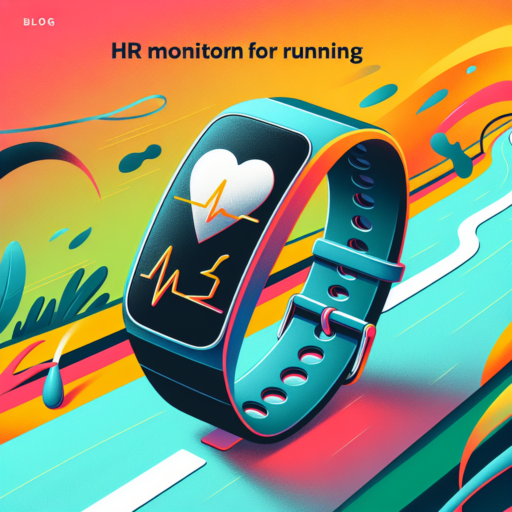Best HR Monitors for Running in 2023
Identifying the Best HR Monitors for Running in 2023 has become a quest for many athletes and fitness enthusiasts. With the evolution of wearable technology, heart rate (HR) monitors have become an essential tool in the runner’s arsenal, offering insights into physical performance, health metrics, and endurance levels. These devices have transcended from being mere fitness trackers to becoming personal health coaches worn on the wrist or strapped across the chest.
The criteria for determining the best HR monitors involve accuracy, comfort, connectivity, and battery life. Accuracy is paramount as it directly impacts the utility of the data for training optimization. Comfort ensures that the wearable does not interfere with the activity, while connectivity with smartphones and fitness apps enhances the overall training experience by providing detailed insights and progress tracking. Finally, long battery life ensures that the device can keep up with the rigorous demands of runners’ daily routines.
Among the standout features to look for in 2023 HR monitors are water resistance, for those challenging weather runs, and the integration of advanced analytics like VO2 max estimations and recovery advice. These features not only elevate the training experience but also tailor the fitness journey towards individual goals and needs.
How to Choose the Perfect HR Monitor for Your Running Needs
Choosing the perfect Heart Rate (HR) monitor for your running needs involves understanding the features that align with your goals and preferences. With a plethora of options available, narrowing down the best fit can be overwhelming. Whether you’re a beginner aiming to monitor your basic heart rate or an advanced runner looking at in-depth analytics, considering certain key factors can guide your decision effectively.
Consider Your Running Goals
Firstly, assess your running goals. Are you looking to improve your cardiovascular fitness, lose weight, or maybe prepare for a marathon? Basic models that track your heart rate and calories burned might suffice for simple fitness tracking. However, for more targeted training, such as interval training or endurance building, opting for a monitor with advanced metrics, including heart rate zones and recovery heart rate, becomes indispensable. Understanding your specific objectives helps in identifying which features are must-haves for your HR monitor.
Analyze the Different Types of HR Monitors
Different types of HR monitors offer varied benefits. Chest strap models are renowned for their accuracy and seamless tracking during intense workouts, making them a favorite among elite runners. Conversely, optical wrist monitors provide convenience and comfort with an easy-to-wear design, although they may sometimes compromise on precision during high-intensity activities. Additionally, features like GPS integration, real-time data syncing, and battery life are crucial considerations. Comparing these aspects will help you choose the model that best fits your running regimen.
The Benefits of Using a HR Monitor While Running
Using a Heart Rate (HR) monitor while running can transform an ordinary exercise routine into a highly effective, personalized workout. By allowing runners to accurately measure their effort levels in real time, HR monitors unlock a deeper understanding of one’s body and how it responds to exercise.
Optimize Your Training Intensity
One of the primary benefits of using a HR monitor during runs is the ability to precisely modulate workout intensity. By targeting specific heart rate zones, runners can ensure they’re not overtraining or, conversely, undertraining. This delicate balance is crucial for maximizing endurance and strength gains while minimizing the risk of injury. For instance, staying within a moderate heart rate zone (typically 50-70% of your maximum heart rate) is ideal for improving cardiovascular health, whereas higher intensities can enhance aerobic capacity.
Track Your Fitness Progress
Another significant advantage is the ability to monitor and record your fitness levels over time. A HR monitor can provide valuable data on your resting heart rate, average heart rate during exercises, and your recovery rate. A decreasing resting heart rate over a period of regular training can be a reliable indicator of improving cardiovascular fitness. Conversely, if your recovery rate—or the speed at which your heart rate returns to normal post-exercise—improves, it’s a sign that your body is adapting well to your training regimen.
Enhance Your Running Efficiency
Moreover, training with a HR monitor can help runners develop more efficient running techniques by aligning their pacing with their heart rate zones. This practice encourages running at a sustainably efficient pace, reducing the likelihood of burning out too early in the session. It also aids in fine-tuning your race strategies by understanding how to distribute your effort across different stages of a race, based on heart rate targets. Thus, it’s not just about working harder, but smarter, to improve overall running performance.
No se han encontrado productos.
Top Features to Look for in a Running HR Monitor
When selecting a running HR (Heart Rate) monitor, it’s paramount to consider the features that cater to both your fitness goals and comfort. Modern HR monitors come equipped with a variety of functions designed to optimize your running experience and provide comprehensive feedback on your workout performance.
Real-Time Heart Rate Data
At the core of a running HR monitor’s functionality is its ability to provide accurate, real-time heart rate data. This feature allows runners to maintain the optimal heart rate zone for their fitness level and goals, whether that’s burning fat, improving cardiovascular health, or increasing stamina. Look for monitors that offer continuous tracking and display your heart rate on an easily accessible screen or through a connected app.
GPS Integration
For those who take their runs outside the confines of a gym, GPS integration is a crucial feature. A running HR monitor with built-in GPS can track your route, distance, and pace, providing valuable insights into your performance and progress. This feature not only helps in mapping out your runs but also in analyzing your speed and endurance over various terrains.
Comfort and Fit
Comfort and fit are critical when selecting a HR monitor, as it’s a device you’ll be wearing throughout your runs. Monitors come in various forms, including chest straps and wristbands. While chest straps are often lauded for their accuracy, wrist-based monitors offer convenience and ease of use. Consider adjustable straps and hypoallergenic materials to ensure a secure and irritation-free experience.
Comparison: Chest Strap vs. Wrist-Based HR Monitors for Runners
When deciding between a chest strap and wrist-based heart rate (HR) monitors for running, numerous factors come into consideration. Each type offers distinct advantages and caters to different preferences and needs of runners. Let’s delve into the specifics of these two popular types of HR monitors to understand their functions and benefits better.
Accuracy and Response Time
The chest strap HR monitor is often lauded for its accuracy. It measures the electrical activity of the heart, similar to an EKG, providing precise heart rate readings. Run close to your chest, it minimizes interference and offers real-time tracking, valuable for interval training where immediate feedback is crucial. Contrastingly, wrist-based HR monitors, which use optical sensors to detect blood flow, can sometimes lag or provide less accurate readings due to factors like wrist movement or poor fit.
Comfort and Convenience
When it comes to the aspect of comfort and daily wearability, wrist-based monitors undoubtedly take the lead. These devices double as watches and activity trackers, making them a more versatile choice for runners who prefer to monitor their activities continuously without wearing a separate device. On the other hand, chest straps, despite their updates for comfort with soft straps and smaller sensors, might still be considered less appealing for all-day wear due to their placement and fit.
Battery Life and Durability
The battery life of wrist-based HR monitors varies widely among models but generally requires more frequent charging compared to chest straps. With a simpler operation focused solely on heart rate monitoring, chest straps often boast a longer battery life, needing only occasional replacements or recharges. Additionally, durability can vary, with chest straps often being more resilient against external factors like sweat and weather conditions, thanks to their waterproof designs.
Setting Up Your HR Monitor for Maximum Accuracy During Runs
Ensuring your HR (Heart Rate) monitor is accurately set up is crucial for runners aiming to optimize their training and performance. An improper setup can lead to inaccurate data, affecting your training zones and the overall efficacy of your workout sessions. Here, we delve into some important steps you can follow to set up your HR monitor for maximum accuracy during runs.
Choosing the Right Type of HR Monitor
First and foremost, selecting the right type of HR monitor is essential. There are generally two types: chest straps and wrist-based monitors. Chest straps are often more accurate as they are closer to the heart and less susceptible to movement errors. However, wrist-based monitors offer more comfort and convenience. Ensuring a snug fit and opting for a model with high reviews in accuracy can help mitigate potential discrepancies in data when using wrist-based monitors.
Optimizing the Fit and Placement
For chest straps, the key to accurate readings is to ensure the device is snug against your body, just below the chest muscle. It’s also important to moisten the electrodes before use, as this helps in picking up the heart rate signal more efficiently. For wrist-based monitors, wear the device at least an inch above your wrist bone, ensuring it’s tight enough not to wiggle while running but not so tight as to restrict blood flow. Regularly cleaning the sensor area on both types of monitors can also prevent build-up that might interfere with signal transmission.
By integrating these practices into your setup process, you can greatly enhance the accuracy of your HR monitor during runs. This not only helps in tracking your fitness progress more reliably but also in tailoring your training sessions more effectively to match your heart rate zones. Remember, consistent accuracy in your HR data is instrumental in achieving your running and fitness goals.
Understanding Your HR Data to Improve Running Performance
Analyzing your heart rate (HR) data is a critical component of enhancing your running performance. By understanding the nuances of what your HR data reveals, you can tailor your training efforts for optimal results. But what aspects of HR data should you focus on? And how can you interpret this information to make meaningful improvements?
Key Metrics to Monitor
Firstly, it’s essential to look at your average heart rate during runs. This figure gives you a broad overview of your effort level and cardiovascular endurance. Also, paying attention to your maximum heart rate during intense sessions can help tailor your high-intensity training. Furthermore, monitoring your heart rate variability (HRV) can provide insights into your recovery and overall heart health. These metrics serve as the foundation for interpreting your HR data effectively.
Applying HR Data to Training
Once you’ve got a grasp on your HR metrics, implementing this knowledge into your training becomes the next step. For endurance training, maintaining a heart rate within a specific zone ensures you’re building cardiovascular strength without overexertion. Alternatively, leveraging your maximum heart rate data during interval training sessions can significantly boost your running performance by enhancing your speed and endurance. Understanding when to push your limits and when to pull back is pivotal, and your HR data holds the key to this balance.
How to Care for Your HR Monitor and Ensure Longevity
Caring for your HR (Heart Rate) monitor is crucial for not only maintaining its accuracy but also for ensuring its longevity. By adopting a few simple maintenance procedures, you can significantly extend the life of your HR monitoring device. Whether you use a chest strap or a wrist-based monitor, understanding how to care for these devices is key to getting the most out of your fitness technology.
Cleaning Your HR Monitor
To prevent the buildup of sweat and bacteria, it’s essential to clean your HR monitor regularly. For chest straps, detach the sensor (if possible) and gently wash the strap according to the manufacturer’s instructions, which typically suggest hand washing with mild soap. Wrist-based monitors can be wiped down with a soft, damp cloth. Avoid using abrasive cleaners or submerging your device in water unless it is rated as waterproof.
Storing Properly
After each use, ensure that your HR monitor is dry before storing it. Moisture can damage the sensors and battery compartment, leading to deterioration. Store your device in a cool, dry place away from direct sunlight. Avoid leaving it in extreme temperatures, such as in a hot car, as this can damage the battery and reduce the monitor’s lifespan.
Regular Maintenance and Updates
For devices that offer firmware updates, ensure you regularly check and update your HR monitor to improve performance and functionality. This also helps in fixing any bugs that might affect the accuracy of heart rate readings. Additionally, inspect your device for signs of wear and tear, especially the strap or band, and replace them as necessary to ensure a good fit and effective monitoring.
Expert Tips for Interpreting HR Monitor Data for Training Optimization
Certainly, focusing on the directive given:
Understanding and interpreting heart rate (HR) monitor data is crucial for optimizing your training regime to achieve better fitness results. The data from your HR monitor is more than just numbers – it acts as a guide to understanding your body’s response to different training intensities. One expert tip is to analyze your resting heart rate trends over time. A decreasing resting HR can indicate an improving level of fitness.
Analyze HR Zones: Each heart rate zone corresponds to a particular intensity level of exercise. For instance, Zone 1 might indicate light activity, whereas Zone 5 could be associated with high-intensity workouts. By interpreting which zones you spend most of your workout in, you can adjust your training to focus on specific fitness goals. It’s about finding the right balance to maximize both fat burning and cardiovascular improvement.
Understanding Recovery Heart Rate
Another crucial aspect of HR data interpretation involves assessing recovery heart rate. This metric measures how quickly your heart rate returns to resting levels after exercise. Faster recovery times can signal better cardiovascular fitness. Monitoring changes in this data can help you gauge how your body is adapting to your training routine over time and whether adjustments are needed for further optimization.
FAQs: Everything You Need to Know About HR Monitors for Running
When diving into the world of running, tracking your heart rate has become an invaluable practice for optimizing workouts and ensuring safety. HR monitors for running have evolved significantly, offering a plethora of features tailored to the needs of runners. In this segment, we’ll address some of the most frequently asked questions about HR monitors, providing clarity and guidance for both novice and seasoned runners alike.
How Accurately Do HR Monitors Measure Your Heart Rate?
Accuracy is crucial when it comes to HR monitors. Modern devices utilize advanced technology such as optical sensors that read blood flow through the skin. While chest strap monitors are known for their high precision, wrist-based monitors have greatly improved in reliability. However, factors like device placement and personal physiology can affect accuracy. Ensuring a snug fit and choosing a monitor designed for runners can enhance measurement precision.
Can HR Monitors Improve Running Performance?
Indeed, HR monitors can be a game-changer in improving running performance. By providing real-time data on your heart rate, these devices allow runners to adjust their pace, ensuring they’re training within the correct heart rate zones for their fitness goals. Training in specific zones can improve aerobic capacity, endurance, and overall cardiovascular health. Moreover, monitoring your heart rate can help prevent overtraining and reduce the risk of injury, making it a crucial tool for any runner looking to optimize their training regimen.
What Features Should Runners Look for in HR Monitors?
When selecting an HR monitor, several key features stand out for runners. Battery life is paramount, especially for those who partake in long-distance running. A monitor that offers continuous heart rate tracking without frequent charges is ideal. Additionally, a monitor that integrates with other devices or apps enhances the user experience by allowing data analysis and sharing. Water resistance, customizable alerts for heart rate zones, and accurate GPS for pace and distance tracking are also highly beneficial features that cater to the diverse needs of running enthusiasts.




